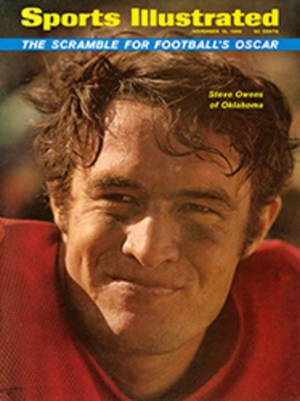
LETTER FROM THE PUBLISHER
A sample from last week's mail was typical enough. "Now you've done it. The final humiliation. Your unmitigated gall has carried you over the threshold of insanity. We unbiased Stanford rooters demand to know why SI has dropped the Indians from its list of the three best teams in the West!" The letter gets put in the stack with the ones that read "We beat Redshirt U for the first time in 40 years and you give us four lousy lines...." or "How can you say we were overwhelmed when we only lost 47-21 and were in the game until the last quarter...." Once again we can take comfort in the evidence that our regular fall feature, FOOTBALL'S WEEK (page 54), is getting its full share of attention.
Any effort to boil down the myriad strivings of a college football weekend into 2,500 or so unminced words cannot help but step on the tender followers of some cleated toes. To characterize one team's defensive performance as lackluster is surely to suggest that the other team's offense was not exactly working its miracles against a giant. The truth miffs both parties—while presumably informing, and sometimes amusing, readers less intimately concerned.
To be unmincing, willing to miff, urbane and consistently knowledgeable is what we ask of FOOTBALL'S WEEK'S regular writer, William F. Reed. And to accomplish this, he gets a lot of help. The FOOTBALL'S WEEK process begins on Monday morning about the time coaches everywhere are telling themselves that all the things that went wrong Saturday couldn't ever happen again. Reed and College Football Editor Walter Bingham confer to select 20 to 25 major games, some for extensive coverage, others for briefer treatment. On Monday afternoon our special correspondents in the appropriate areas are advised of our needs. On the following Saturday night they wire us a total of more than 30,000 words, telling us not only who won and how but also offering the inside anecdotes and special insights that interest the fan who follows college football not just in his own conference but as a national game. To be able to take full advantage of the material we receive, fewer games are being assessed this year by FOOTBALL'S WEEK—46 teams are covered in this issue—but more space is given to each.
It is also Reed's responsibility to pick the top three teams in each region and the Back and Lineman of the Week, duties that embroil him in further controversy. As the season opens, the top three teams are determined by SI's rankings of the top 20 in the country. But from that moment on the judgment is based on a simple rule: who would beat whom if they played right now on a neutral field. (Reed—Transylvania University, '66—has no alumni passions of his own to sway him.) "Never mind last week's standings," says Reed. "If somebody gets beat, we run 'em right out and run somebody else in." Of the 15 teams rated the class of their regions in this year's first FOOTBALL'S WEEK, seven have been ousted already. (Remember when Georgia was the best in the South?)
Every Saturday produces several glorious individual performances, especially in these days of wide-open offenses, so there are certain guidelines for Back and Lineman selections. No more than one award a year is likely to go to one team, and geographical dispersion is preferred. A man who starred by coming up with key plays is given the edge over one whose excellence was largely statistical. The winners receive framed certificates to commemorate their selection.
We, meanwhile, receive our letters. One will arrive any moment: "How could that nitwit Reed pick Archie Manning as Back of the Week when...." It's all part of the fun of everybody's football week.

